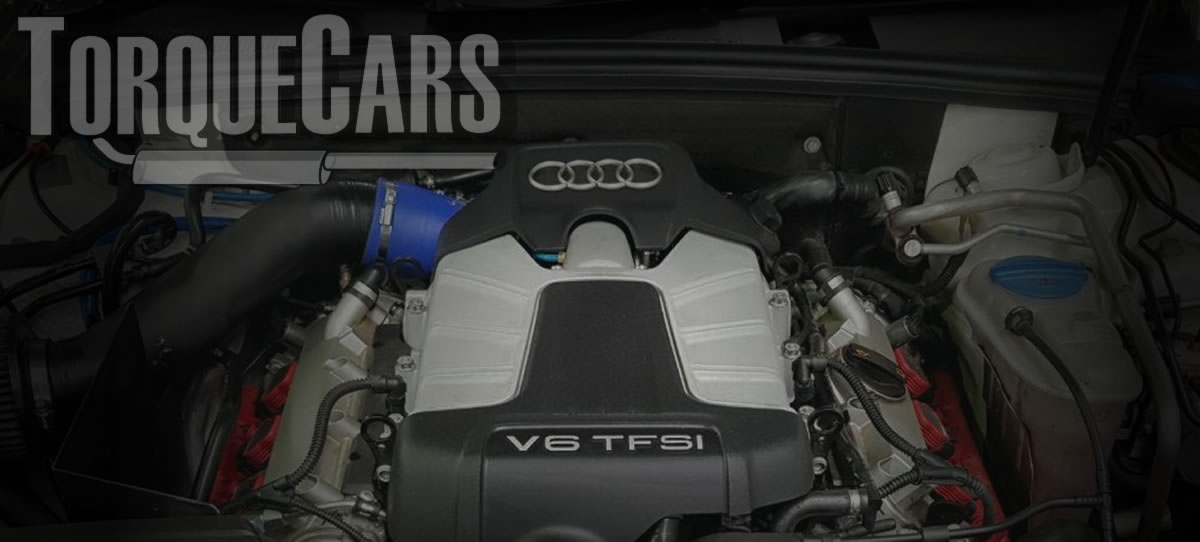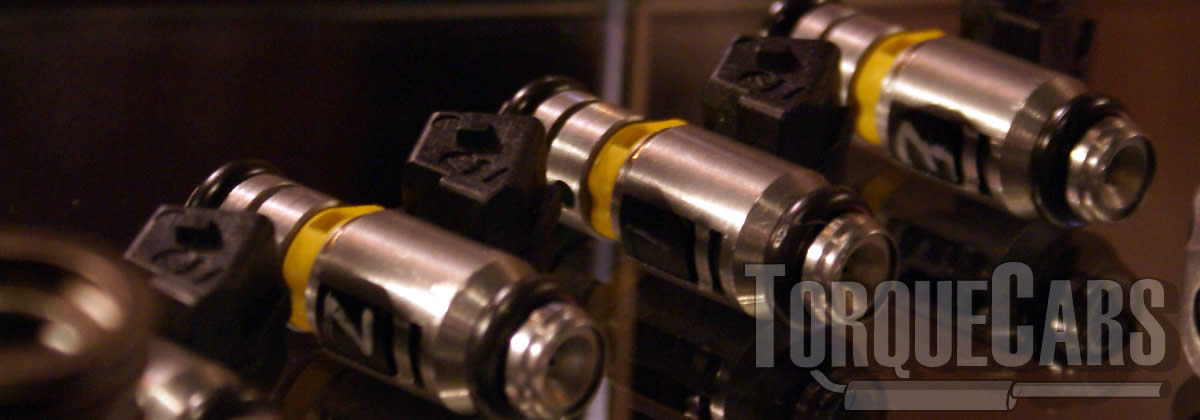Guide to tuning the 3.0 V6 24v TFSI (EA837) engine
"Thank you for reading our EA837 tuning guide."
Current engine codes for the 3.0 V6 24v TFSI EA837 included CAJA, CAKA, CCBA, CMUA
The engine shuns a turbo, instead utilizing an Eaton 'Twin Vortices Series' supercharger and 24 valves plus Fuel Stratified injection making it feel like a very Torque rich V8.
Instead of the popular BOSCH units, a Siemens Simos 8 series ECU controls everything keeping it running efficiently.
For a clean burn the spark plugs were mounted centrally, allowing the FSI injection system to deliver maximum power.
We rely on our visitors to pass on tips and tell us about their projects and what worked on their car, and this article is the culmination of the feedback we have received. First let us look at the history and specs of this engine and then consider which tuning modifications work best on it.
History of the 3.0 V6 24v TFSI EA837 Engine

- 268 bhp at 4,780–6,500 rpm 295 lbft at 2,150–4,780 rpm
CMUA
Audi A4, Audi A5, Audi Q5 - 286 bhp at 4,850–6,500 rpm 310 lbft at 2,500–4,800 rpm
CAJA
Audi A6 (C6) - 329 bhp at 5,500–7,000 rpm 325 lbft at 2,500–5,000 rpm
CAKA/CCBA
Audi S4 (B8), Audi S5 - 349 bhp at 6,000–6,500 rpm 347 lbft at 4,000–4,500 rpm
CTXA
Audi SQ5 (8R) VW Touareg Hybrid
What are the most effective EA837 tuning mods
The ultimate tuning parts on an engine are in our opinion the ones that give the best power gain for you spend.
We won't be swayed by popular EA837 tuning parts, they need to be cost effective.
The camshaft profile plays a big part in the engines power output so camshaft upgrades make quite a large difference. The intake and exhaust durations will alter depending on the chosen camshaft profile, so large bhp gains are on offer for camshaft upgrades.

Fast road cams commonly raise the bhp through the rpm range, you could drop a little low end bhp but your higher rpm power will be lifted.
The following monster setup achieved an astonishing 700nm of Torque. Although this was not achieved on pump fuel.
- AWE Supercharger Pulley (57.55mm)
- Kustom Imports LW Crank Pulley v2 (200mm)
- Tampa Autosports Ported & Polished Blower
- Tampa Autosport 4" Intake
- AWE Coldfront Kit with hygroscopic vents
- PLM Coolant Reservoir with VariMax booster pump
- Test pipes + Milltek non-resonated exhaust
- Porsche 997 Throttle Body with iAbed TB Adapter
- AEM Stage II Meth Kit with Snow Solenoid
- Autotech HPFP
- RS7 Hybrid LPFP
- Mishimoto Trans Cooler with Overflow Tank
- SAI Delete
- Bosch FR5DTC Plugs (Bosch Coils)
- Intercoolers v1
- Flex Fuel LPFP + Walbro 450 lift pump
Race cams, raise the higher rpm power band but as a result the car will not idle smoothly and low end power nearly always suffers.
You will never have found a Motorsport cam is a pleasure to live with when in heavy traffic.
Some EA837 engines respond better to mild cam durations than others.
The ecu map and fuelling also have a large bearing on the bhp gains you'll hit.

Extending exhaust or intake durations can alter the bhp band and on most engines the exhaust and intake durations do not need to match, although most cams and tuners use matched pairs there are some advantages to extending the intake or exhaust durations.
Please watch our introduction Video tutorial to car tuning. Be sure to subscribe and support our new channel.
How to tune your car
- Improve the handling
Focus on Suspension improvements, such as coilovers and make sure the bushings are in good order and that the alignment is correct. Then focus on improving the brakes, with a big disk brake conversion kit and fast road brake pads.
- Remove restrictions
Focus on the intake and exhaust with filters being the common point of restriction in a tuned car. Intercoolers may also become restrictive on turbo engines so this may also need to be uprated.
- Burn more fuel & air
Increase the fuelling so it matches the air coming into the engine. The ratio is important so you need to improve the fuel pump and injectors, so the head mods, big valve conversions, fast road camshafts and forced induction upgrades extra supply of air is adequately met.
- Test and replace any weak parts
Weak areas are commonly the clutch, the turbocharger and pistons and crankshaft in a highly tuned engine. Makes sure these components will cope with your power aspirations.
- The Tune or Remap
A cars ECU controls the fuel, timing, spark and even the turbo in some cases, so to fully extract your gains you should remap the car last and this will fully release the power. Some cars are easy to map, and others require piggyback ECU's or aftermarket ECU's but this is the most vital step of your tuning project.
Modifying to Stage 1:
Intake headers, Panel air filters, Sports exhaust manifold, Drilled & smoothed airbox, Remapped ECU, Fast road camshaft.
Modifying to Stage 2:
Sports catalyst & performance exhaust, Fast road cam, Ported and polished head, fuel pump upgrades, induction kit, high flow fuel injectors.
Modifying to Stage 3:
Engine balancing & blueprinting, Adding or Upgrading forced induction (turbo/supercharger), Competition cam, Crank and Piston upgrades to alter compression, Twin charging conversions, Internal engine upgrades (head flowing porting/bigger valves).
ECU flashing helps fully realize the full potential of all the mods you've done to your EA837.
It will usually give around 30% more power on turbocharged vehicles, but your mileage will vary depending on the mods you've done and the condition of your engine.
Getting air and fuel into each cylinder is the aim to any car tuning task and the 3.0 V6 24v TFSI is no exception.
Intake headers flow the air during the suck phase from the filter and allow it to be drawn into the engine cylinders.
The size of bore and shape and rate of flow of the Intake headers can make a big effect on to fuel delivery on the EA837.
Most headers are ripe for aftermarket parts, although some manufacturers provide reasonably well designed headers.
Larger EA837 valves, doing some port work and head flowing will also improve bhp and torque, the fantastic side effect is it will raise potential for raising the bhp and torque increase on other upgrades.
3.0 V6 24v TFSI turbo upgrades - which are best?

The more air to get into an engine, the more fuel it can burn and uprating the induction with a turbocharger upgrade makes massive power gains.
NASP engines need quite a lot of work when you add a turbo, so we have a separate guide to help you take into account the pros and cons of going this route on your EA837
When a car has forced induction mods are simpler to install and you will discover turbocharged engines already contain many forged and stronger components.
However you will find an engines have weakspots thankfully the EA827 is pretty solid and well constructed, supercharger upgrades usually make the best power gains for your money.
Discover these limitations and upgrade to more solid crank and pistons to utilize the power.
We see many guys spending a loads on turbo and supercharger upgrades on the EA837 only to suffer the humiliation of seeing the engine block go up in smoke just after it's completed.
A simple overdrive pulley on the supercharger, or larger capacity supercharger can give impressive power gains.
Some have gone the turbo route but a larger upgraded turbo will often suffer low end lag, and low capacity turbos spool up really quickly but don't have the peak rpm torque gains - both of which are negated by the use of the supercharger.
It is not unusual that there's a restriction in the air flow sensor (AFM/MAF/MAP) on these engines when loads more air is being drawn into the engine.
Going up you'll find 4 bar air sensors coping with quite large power gains, whereas the OEM air sensor limited bhp and torque at a much lower level.
Adding a supercharger or additional turbo will make large bhp gains, although more difficult to setup. We have a twincharger bhp adding guide if you want to read more.
3.0 V6 24v TFSI Fuelling
When you boost the bhp and torque you will need to ramp up to the fuel system.
More bhp and torque needs more fuel.  When it comes to your injectors flow rate you need some spare capacity, so don't calculate which injector and fuel pump setup will match your needs exactly or you'll have flat spots and fuelling issues and problems.
When it comes to your injectors flow rate you need some spare capacity, so don't calculate which injector and fuel pump setup will match your needs exactly or you'll have flat spots and fuelling issues and problems.
Generally the TFSi's flow fuel really well, but we've seen people adding port injection upgrades for a little more.
I haven't found any direct replacements for the TFSi injectors on the 3.0V6 so if you know of any let me know and I'll pop a mention up in here.
As a rule of thumb add 20% capacity when fitting an injector, this allows for injector deterioration and allows you some spare capacity should the engine require more fuel.
EA837 Exhaust
You may need to uprate your exhaust if the existing exhaust is creating a flow problem.
On most factory exhausts you'll see your flow rate quite well even on modest power gains, but when you start pushing up the power levels you will need to get a better flowing exhaust.
Sports exhausts can help increase the flow of air through the engine.
But if the exhaust pipe is too large, ie: over 2.5 inches bore, you will lose a lot of the exhaust flow rate and end up losing power and torque.
Typically exhaust restrictions come around the catalysts installed, so adding a higher flowing race alternative will help avoid this restriction.
Weak spots Issues & problem areas on the 3.0 V6 24v
The EA837 engines are generally reliable and solid as long as they are regularly serviced and maintained.
Regular oil changes are vital on the EA837, especially when tuned and will help extend the life and reliability of the engine.
For more information on Tuning your VAG engine please join us in our friendly forum where you can discuss EA837 tuning options in more detail with our EA837 owners. It would also be worth reading our unbiased VAG tuning articles to get a full grasp of the benefits and drawbacks of each modification.
Please help us improve these tips by sending us your feedback in the comments box below.
We love to hear what our visitors have got up to and which parts work best for them on each model of car. Comments are used to improve the accuracy of these articles which are continually updated.
If you liked this page please share it with your friends, drop a link to it in your favourite forum or use the bookmarking options to save it to your social media profile.
Check out TorqueCars new YouTube channel, and see their awesome new content...
Feedback
Please use our forums if you wish to ask a tuning question, and please note we do not sell parts or services, we are just an online magazine.
Help us improve, leave a suggestion or tip
